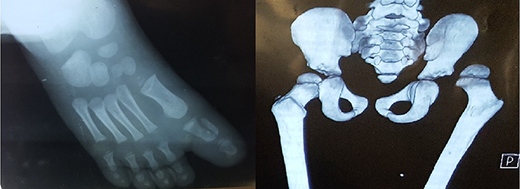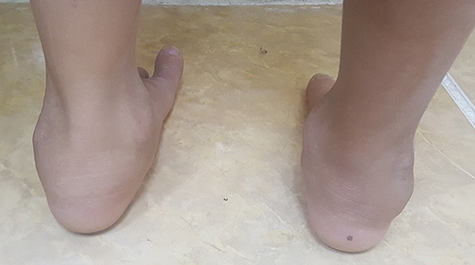Fear of pain dominates our lives. Even pain from a minor superficial cut can be so discomforting. How would life be without pain; is it a blessing, or a curse?
A case report of a 5-year-old boy who doesn’t feel pain.
An emergency department in a middle-eastern region received a 5-year-old boy who presented with complaints of burns on his hands by a heater. The boy showed no signs of pain or discomfort.
The child was a product of a consanguineous marriage. He had two elder sisters, eight and ten years old, and one younger sister who was four years old. Neither his siblings nor his parents had similar insensitivity to pain. Similarly, family history was insignificant for any other medical condition.
The mother had first noticed the child’s insensitivity to pain when the boy was 6 months old. At that time, he had a burn injury, but he didn’t cry. Similarly, he also didn’t cry or showed any signs of discomfort or distress when he had a hip dislocation and lost 4 of his upper teeth. The parents had never noticed him sweating even during strenuous physical activity, nor he reacted to odour.
Growth history revealed no delay in his developmental milestones except for stress incontinence.
On examination, the boy was conscious, active, and alert, 110 cm tall and weighed 18 kgs. His head circumference was 49 cm. He had no abnormality in his posture, gait, or consciousness. The patient was afebrile. On inspection, multiple scars were noticed on his hands, feet, and knees bilaterally, which, according to the mother, were due to unintentional trauma/injuries (as shown in the first image).
Further examination revealed a malaligned big toe of the left foot caused by a previous fracture. A swelling was noticed bilaterally on knees and feet, which have been there since he suffered hip dislocation at the age of 3 years.


During the examination, the child was noticed to have milestones appropriate for his age, but he was wearing a diaper. Corneal reflexes were absent. The boy did not react to pain (pinprick), temperature (hot bodies), or pressure stimuli. The child did not react to the salty and spice test nor to hot and cold drinks. The rest of the clinical examination was normal.
Infectious etiologies were ruled out. Over the course of 4 years, the child had been taken to multiple facilities. He had undergone multiple investigations, including HIV, HBs Ag, HCV, immunoglobulin levels: IgA, IgG, IgM, endoscopy, sin tests, etc. Only after a nerve conduction test, the child was suspected of having hereditary sensory neuropathy with lower limbs affected more severely; findings suggestive of congenital loss of pain (‘Type C sensory fibre’)
A working diagnosis of congenital insensitivity to pain was made.
The child’s injuries were attended to; he was given rehabilitative and mental health support. His family was counseled. The family and child were counseled with daily life techniques to keep children safe at home and in the outside environment. There is no definitive treatment for congenital insensitivity to pain. The patients are provided supportive and symptomatic care and are counseled regarding protection from injuries, self-mutilation, and wound infections.




